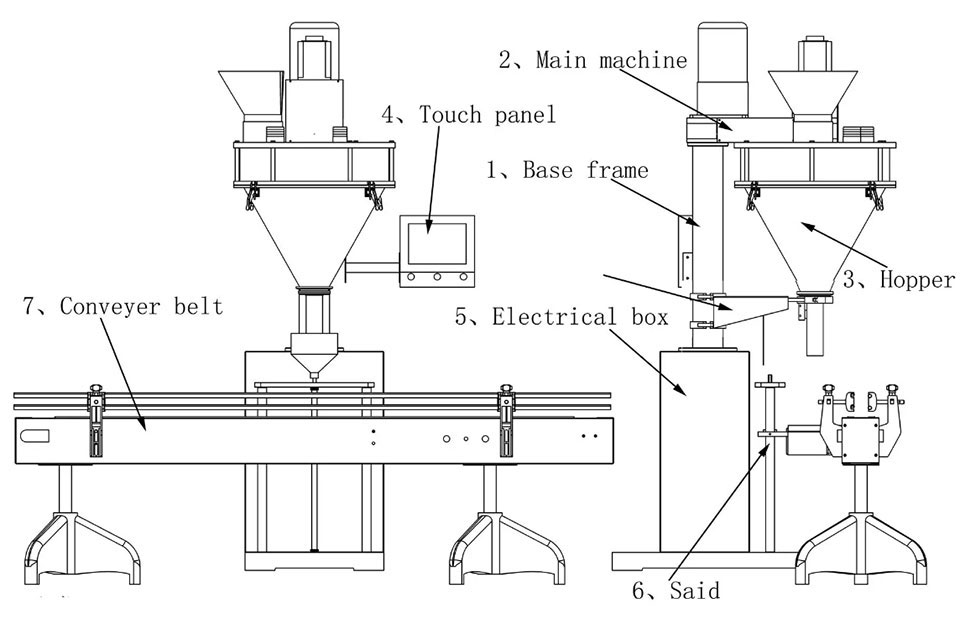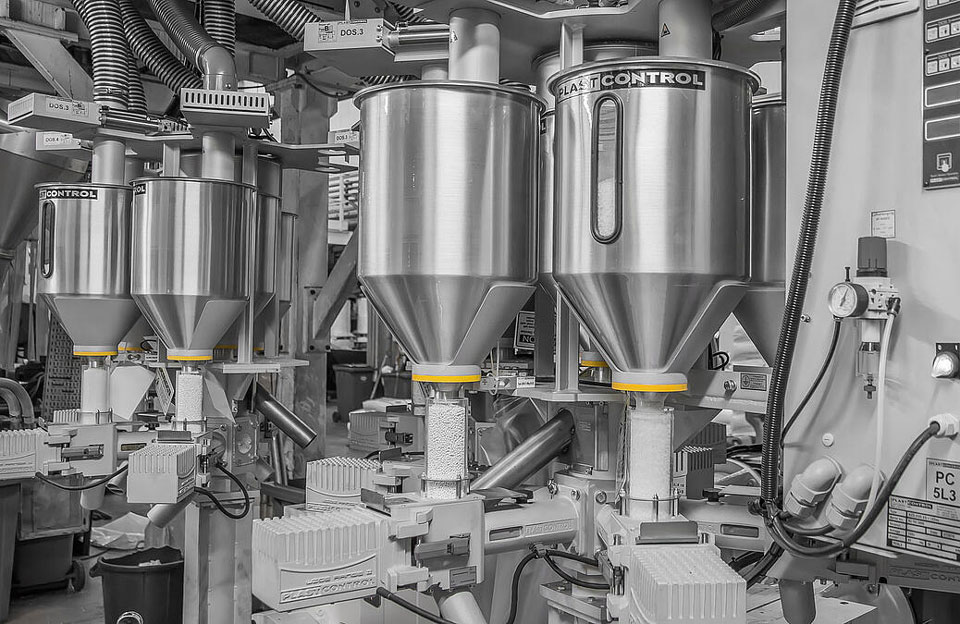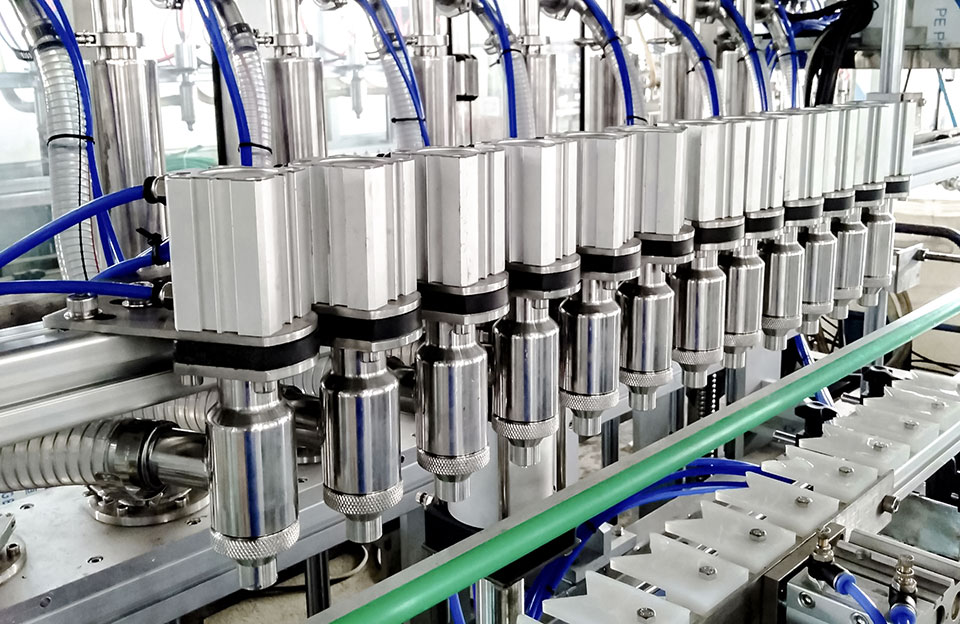The powder filling machine is the mechanical equipment for filling milk powder, soybean powder, protein powder, and other powder materials into bottles. The machine has a series of processes, such as automatic bottle conveying, automatic feeding, filling, and sealing. It comprises a filling head, connecting plate conveyor belt, positioning device, and other parts. Powder filling machines can form a complete filling line with bottle unscramblers, capping machines, and labeling machines.
The Structure of Powder Filling Machine
The structure of a powder filling machine may vary, depending on the specific design and manufacturer, but its essential components are generally the same. The following is an overview of its basic components:
- Hopper: A hopper is a container that holds powder materials. It is usually located above the filling mechanism and may have different capabilities depending on the application’s requirements.
- Auger or Screw Conveyor: The auger is the helical screw inside the hopper. It rotates to move the powder from the hopper to the filling nozzle. The size and design of the auger may vary depending on the type of powder being filled.
- Filling nozzle: The filling nozzle is the outlet for dispensing powder into the container. It is usually located below the hopper and is connected to the auger. Nozzles can be of various designs, such as a single tube or multiple tubes, depending on the required filling speed and accuracy.
- Control system: The control system consists of electronic components and software that manage the operation of the powder filling machine. It allows the operator to set fill volume, speed, and accuracy parameters. Control systems may also include sensors to detect the presence of containers, monitor fill levels and ensure proper operation.
- Conveyor system: In an automatic powder filling machine, a conveyor belt system is usually used to transport the container to the filling station. Conveyors can be equipped with mechanisms to position and stabilize containers during filling.
- Frame and Structure: The machine’s frame provides structural support and stability. It is usually made of stainless steel or other durable material to withstand the demands of the powder filling process. The frame may also include safety features such as guards and interlocks to protect operators and prevent accidents.
- Optional Accessories: Depending on the application’s specific requirements, the powder filling machine may include additional features and accessories. These include dust collection systems to control airborne powder particles, level sensors to monitor hopper powder levels, and integration with other packaging equipment, such as capping or labeling machines.
The Working Process of Powder Filling Machine
The working process of a powder filling machine involves several steps to accurately and efficiently fill containers with powdered substances. Here is a general overview of the typical working process:
- Preparation: The machine needs to be set up and prepared before starting the filling process. This includes ensuring an adequate supply of powdered material in the hopper, adjusting the filling parameters on the control system, and setting up the conveyor system if applicable.
- Container Placement: Empty containers are placed onto the conveyor system or manually positioned at the filling station. The conveyor system moves the containers to the designated filling position.
- Filling Sequence Initiation: The operator initiates the filling sequence by activating the machine through the control system or using a foot pedal or other input mechanism.
- Powder Dispensing: As the filling sequence begins, the auger or screw conveyor inside the hopper starts rotating. The rotating motion of the auger moves the powdered material from the hopper to the filling nozzle.
- Filling Process: The powder is dispensed from the filling nozzle into the containers. The auger’s rotation speed and the control system settings determine the volume of powder dispensed into each container. The filling nozzle can be designed to accommodate single or multiple containers simultaneously.
- Level Detection: Some powder filling machines are equipped with level sensors to monitor the filling level in the containers. Once the desired level is reached, powder dispensing is stopped automatically.
- Container Removal: Once the filling process is complete, the filled containers are manually or automatically removed from the filling station. If a conveyor system is used, it transports the filled containers to the next stage of the packaging process.
- Cleaning and Maintenance: After the filling process, cleaning the machine to remove any residual powder and prevent cross-contamination is essential. The machine may also require periodic maintenance, such as lubricating moving parts or replacing worn-out components.
Conclusion
The powder filling machine is economical and applicable, has different types, and can be selected according to different needs. It has many applications and can be widely used in automatic quantitative filling, bag making, and sealing packaging in various industries such as food, medicine, and chemical products. Choosing a suitable powder filling machine can effectively promote the development of productivity and improve production efficiency.


